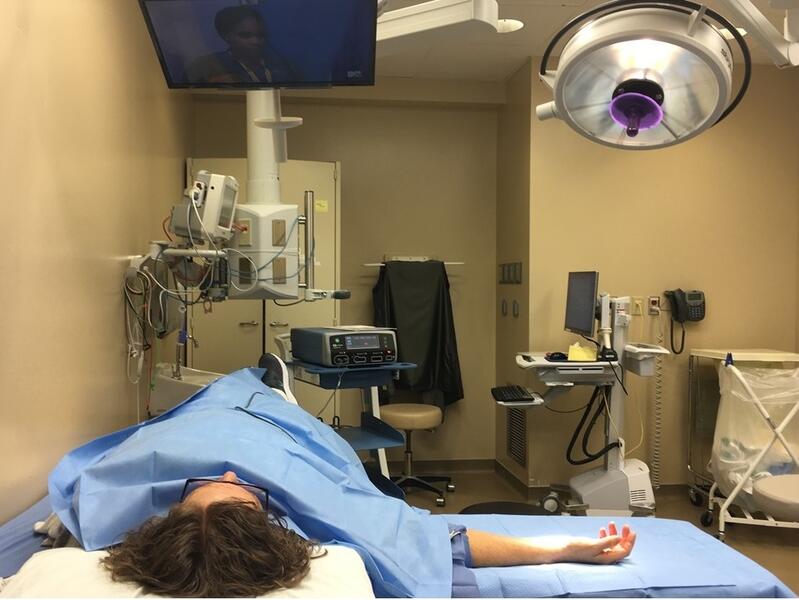Barb Halstenson had been experiencing carpal tunnel symptoms for a long time when she finally decided it was time to do something about it.
While riding her bike her hands would go numb, or she would wake up at night with her hand over her head and not be able to feel her fingers.
It was not really painful but it was really annoying. Now retired for 10 years, Halstenson recalled her discomfort dated back to her years at the computer keyboard working in an office.
“I just decided it was time to get something done,” she said. “And after I did I wished I’d done it a long time ago. It was much easier than I thought it would be.”
Newer approach to hand surgery
Hand surgery has changed over the years, which Halstenson discovered during a preliminary conversation with Robert Van Demark, Jr., M.D., at Sanford Orthopedics & Sports Medicine Sioux Falls, South Dakota.
“He told me I could go to the hospital to have it done or we could do the surgery in the office,” Halstenson said. “I told him I’d rather do it in the office — then I wouldn’t have to go into a surgery area of the hospital.”
It is what Sanford providers like Dr. Van Demark call “wide awake” surgery. It is safe and convenient and can be used with a variety of hand injuries and conditions.
Using a local anesthetic, Dr. Van Demark took about 15 minutes to operate on Halstenson’s carpal tunnel.
She was awake the whole time and capable of going home on her own shortly after the procedure.
“The biggest selling point is patient convenience,” Dr. Van Demark said. “I think people realize how easy this is to do compared with going to the hospital. People can keep their clothes on, they can eat breakfast and they can drive home after surgery.”
Easy as going to the dentist
Before the availability of wide awake hand surgery, Halstenson’s procedure would have included general anesthesia, and patients would not be able to eat after midnight the day prior to surgery. A procedure at the hospital would also include things like an EKG, chest X-rays and lab work.
In the past, physicians had to put people to sleep because they had to use a tourniquet on the arm. The prevailing medical belief was that the use of epinephrine, a drug used to restrict blood loss during surgery, was potentially dangerous for hand procedures.
Doctors have since discovered that is not the case. Hence, there is no need for a tourniquet or for general anesthesia.
“We’ve probably done close to 1,200 surgeries here in our office procedure room,” Dr. Van Demark said. “We’ve had no infections. It’s like going to the dentist. It’s really an earthshaking change in comparison to what we used to do.”
Watch TV during surgery
Halstenson’s experience at Dr. Van Demark’s office was pleasantly uneventful. She had the option of watching television, listening to music or talking with the staff and Dr. Van Demark while the procedure was taking place.
She was careful about not damaging the stitches in the two weeks that followed. She also avoided heavy lifting. Essentially, if it hurt, she was doing too much. She started off with a hand brace after the initial bandage was off but discarded that, too, after a short time.
“I definitely would recommend if you have hand surgery to do it the way I did it,” Halstenson said. “And I might be a little biased but I think Dr. Van Demark is the best.”
If you are interested and want to see if you qualify for a procedure, make an appointment with a hand specialist at Sanford Orthopedics and Sports Medicine at (605) 328-2663. A referral is not required.
Learn more
- Surgery precautions in place as hospitals get back to normal
- Wrist clinical trial hopes to heal with stem cell therapy
- What you need to know about total joint replacement surgery
…
Posted In Orthopedics, Sioux Falls
